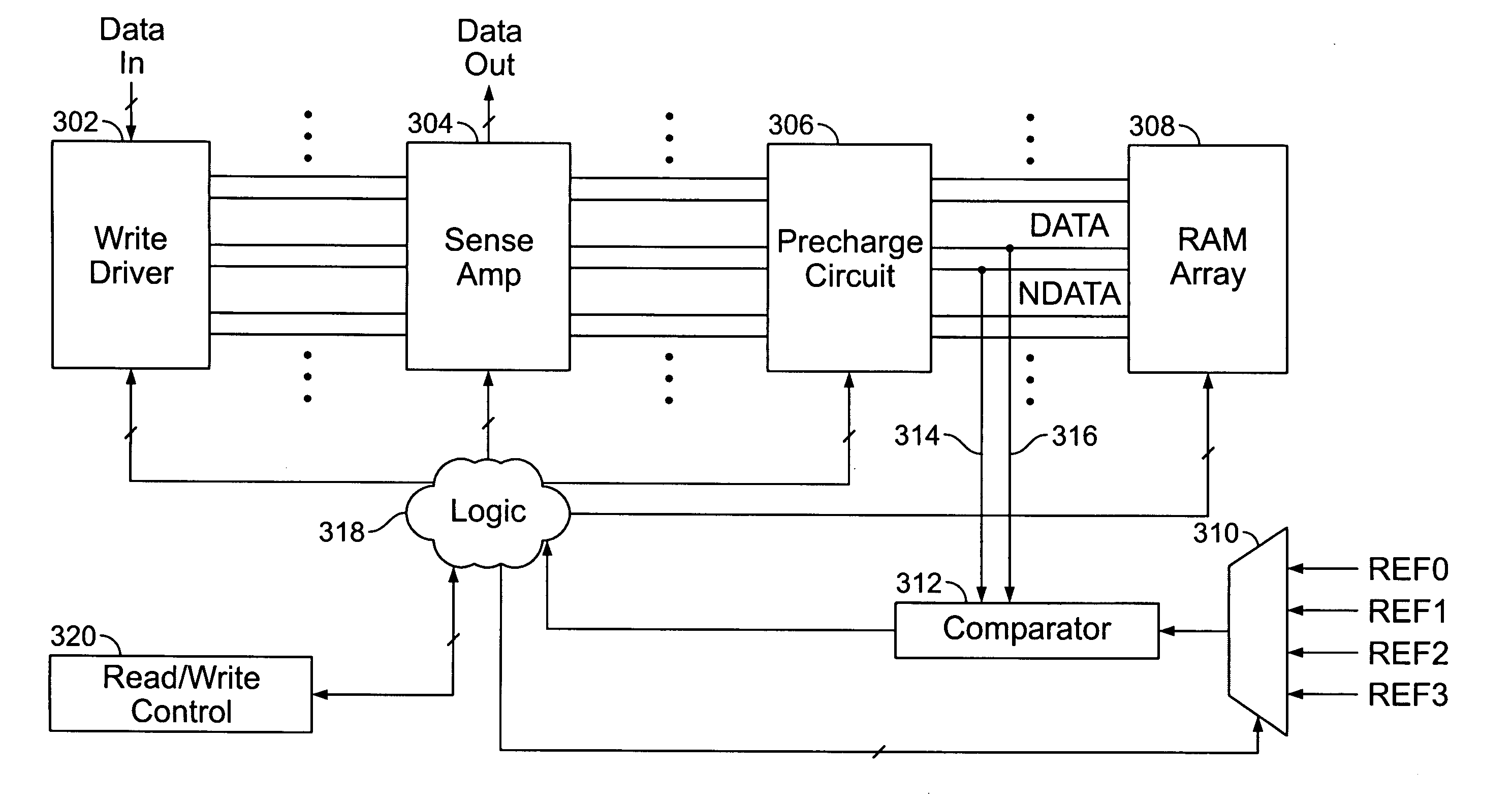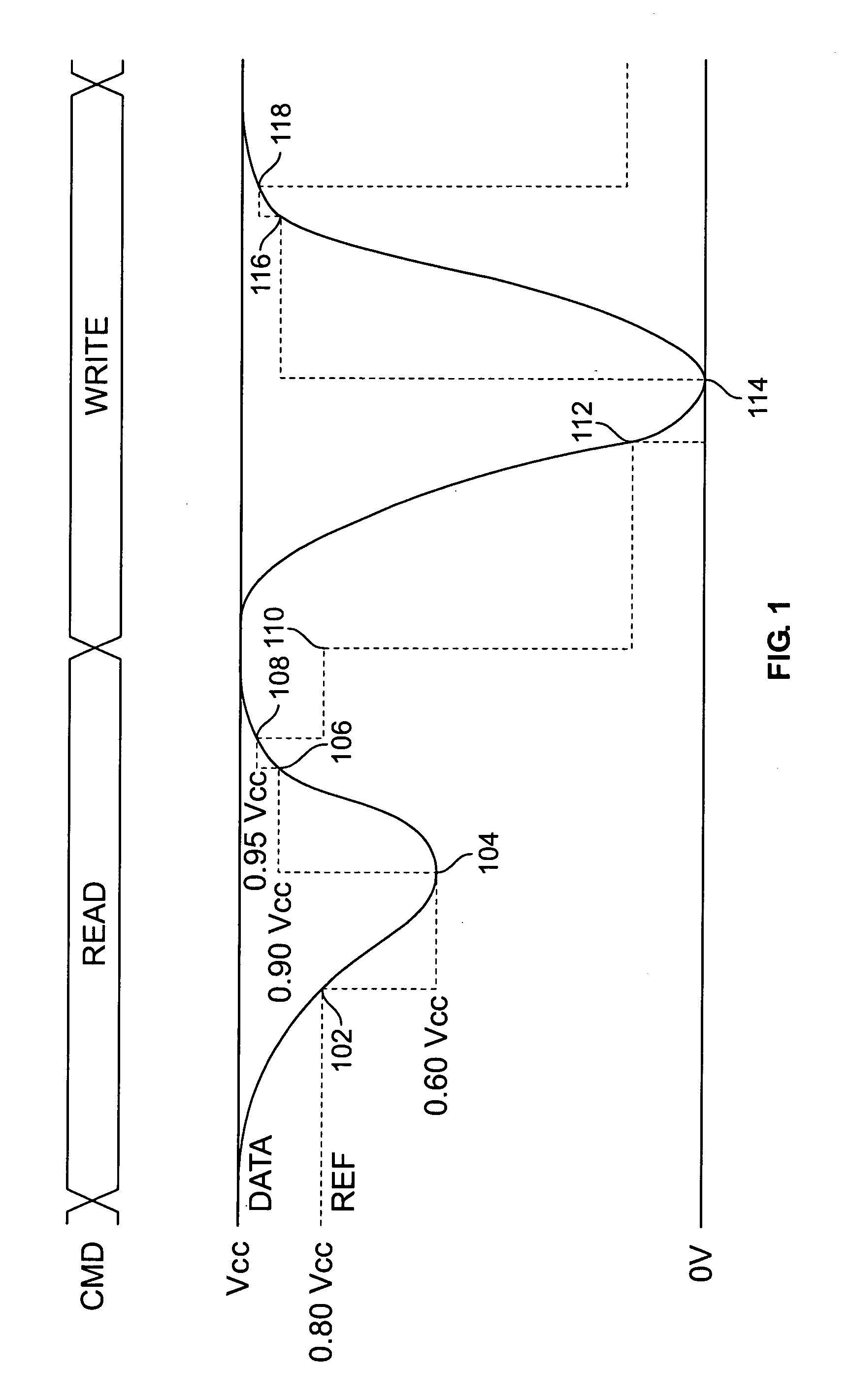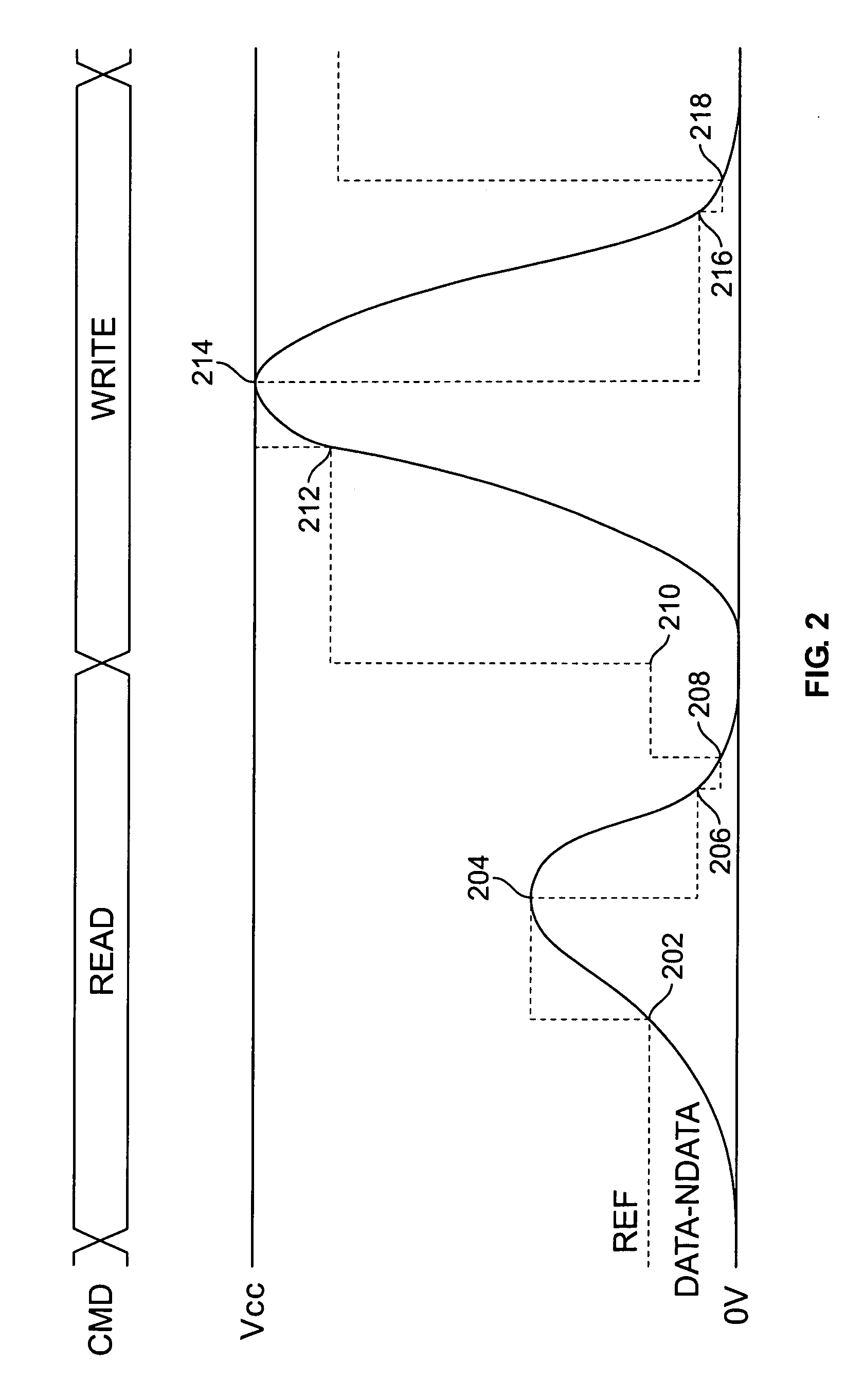Voltage-based timing control of memory bit lines
a voltage-based timing and memory bit technology, applied in the direction of information storage, static storage, digital storage, etc., can solve the problems of data corruption, memory cells, precise timing constraints, control of memory bit lines, etc., to improve efficiency, improve memory robustness, and improve performance with little or no loss in area
- Summary
- Abstract
- Description
- Claims
- Application Information
AI Technical Summary
Benefits of technology
Problems solved by technology
Method used
Image
Examples
Embodiment Construction
[0016]FIG. 1 is a timing diagram showing illustrative waveforms in accordance with the invention. Signal CMD encodes the operation being performed on the memory, if any. Signal DATA represents the voltage on a memory bit line, and signal REF represents a reference threshold voltage used for bit line control. In order to facilitate understanding of the invention, a brief description of exemplary memory operations is provided below.
[0017]Many memory systems use a pair of bit lines to transfer data to and from each cell. The bit lines in a given pair are referred to herein as DATA and NDATA. Before a read or write operation commences, both bit lines are precharged to a predetermined value by a precharge circuit. The embodiment described herein uses a precharge voltage of Vcc, though any suitable value, such as Vcc / 2 or 0V, could be used.
[0018]During a read operation, both bit lines are connected to the corresponding cell. Depending on the logical value stored in the cell, either DATA w...
PUM
 Login to View More
Login to View More Abstract
Description
Claims
Application Information
 Login to View More
Login to View More - R&D
- Intellectual Property
- Life Sciences
- Materials
- Tech Scout
- Unparalleled Data Quality
- Higher Quality Content
- 60% Fewer Hallucinations
Browse by: Latest US Patents, China's latest patents, Technical Efficacy Thesaurus, Application Domain, Technology Topic, Popular Technical Reports.
© 2025 PatSnap. All rights reserved.Legal|Privacy policy|Modern Slavery Act Transparency Statement|Sitemap|About US| Contact US: help@patsnap.com



